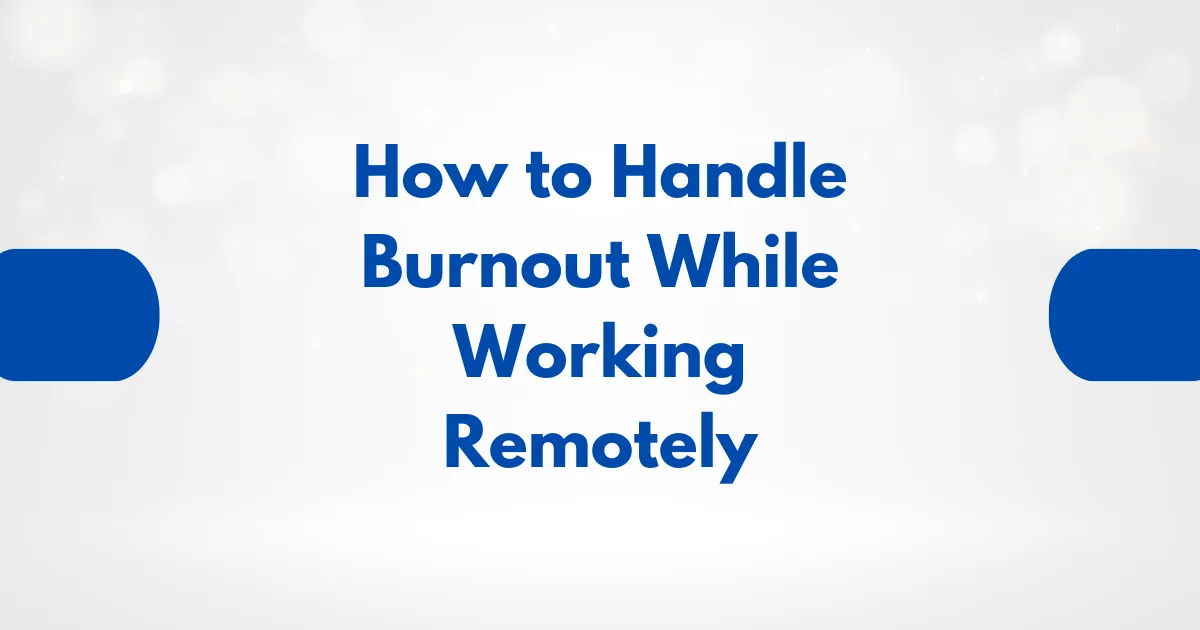How to Handle Burnout While Working Remotely
Working remotely has countless perks—flexibility, comfort, no commute—but it also brings unique challenges. One of the most serious? Burnout. When your office is your home and the lines blur, it can be hard to truly disconnect. Let’s explore what causes remote work burnout and how to deal with it effectively.
What Is Remote Work Burnout?
Remote work burnout is emotional, mental, and physical exhaustion caused by prolonged stress and lack of boundaries while working from home. It often shows up as:
-
Constant fatigue, even after sleeping.
-
Feeling disconnected or unmotivated.
-
Irritability and reduced performance.
-
Anxiety or dread when starting your workday.
Why Burnout Happens Remotely
Burnout can creep in without us even realizing it. Common causes include:
-
Lack of boundaries between work and personal life.
-
Overworking due to blurred time limits.
-
Social isolation and lack of support.
-
Poor ergonomics or unhealthy environments.
-
Always being online or reachable.
Signs You Might Be Burning Out
Here are red flags that shouldn’t be ignored:
-
You feel tired even before starting work.
-
You procrastinate more than usual.
-
You’ve lost passion or interest in tasks you once enjoyed.
-
You feel emotionally drained and mentally foggy.
8 Ways to Deal With Remote Work Burnout
1. Set Clear Boundaries
Have defined work hours and a hard stop at the end of the day. Communicate these with your team and stick to them.
2. Create a Dedicated Workspace
Avoid working from bed or the couch. Designate a specific area for work—ideally with natural light and a good chair.
3. Take Regular Breaks
Use techniques like the Pomodoro method (25 mins work, 5 mins break). Stand up, stretch, walk around, or look away from screens.
4. Disconnect After Work
Shut down your computer. Log out of work accounts. Let your brain know: work is over.
5. Prioritize Tasks
Don’t try to do it all. Use tools like Eisenhower Matrix or daily to-do lists to focus on what’s urgent and important.
6. Stay Social
Schedule regular non-work video calls with friends, coworkers, or join online communities to combat isolation.
7. Move Your Body
Exercise is a powerful burnout remedy. Even a 10-minute walk improves mood and reduces stress.
8. Practice Mindfulness
Deep breathing, journaling, or short meditations can help you stay grounded.
Pro Tip:
Block time for non-negotiable rest in your calendar, just like you would a meeting. Your mental health deserves that priority.
Common Mistake:
Many remote workers believe burnout means they’re weak or failing. It doesn’t. It’s a signal that something needs to change—and you have the power to shift it.
FAQ
What causes burnout in remote work?
Lack of boundaries, isolation, constant availability, and overwork are leading causes.
How do you avoid burnout when working from home?
By creating structure, prioritizing well-being, taking breaks, and nurturing social connections.
Is it OK to take mental health days when working remotely?
Absolutely. Just because you’re home doesn’t mean you’re not stressed. Mental health days are valid and necessary.
How long does it take to recover from burnout?
It varies, but with intentional rest and support, most people feel better within a few weeks.
Related Reads
- Best Home Office Setup Tips for Remote Workers
- How to Stay Motivated as a Remote Worker
- How to Set Boundaries When Working From Home
CTA:
Feeling the burnout creeping in? It’s time to reclaim your energy. Start with one small change today—your future self will thank you.

